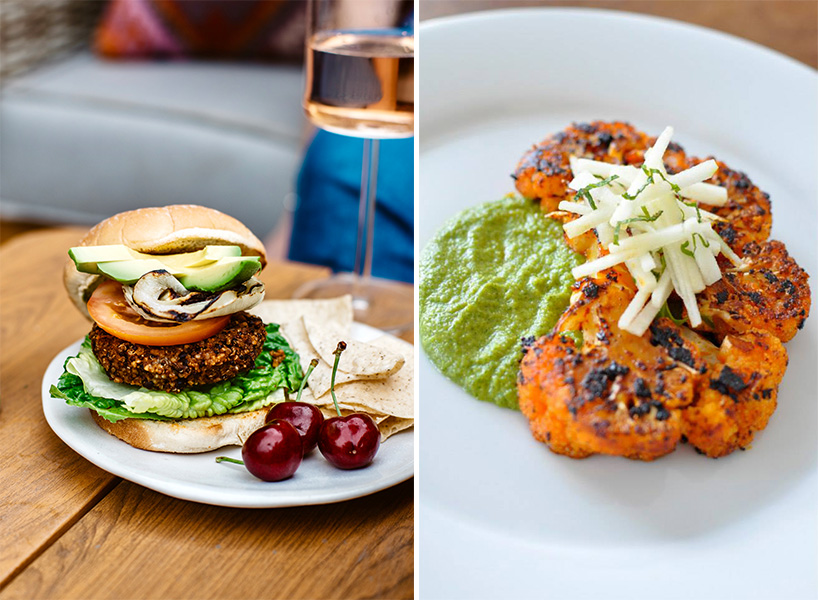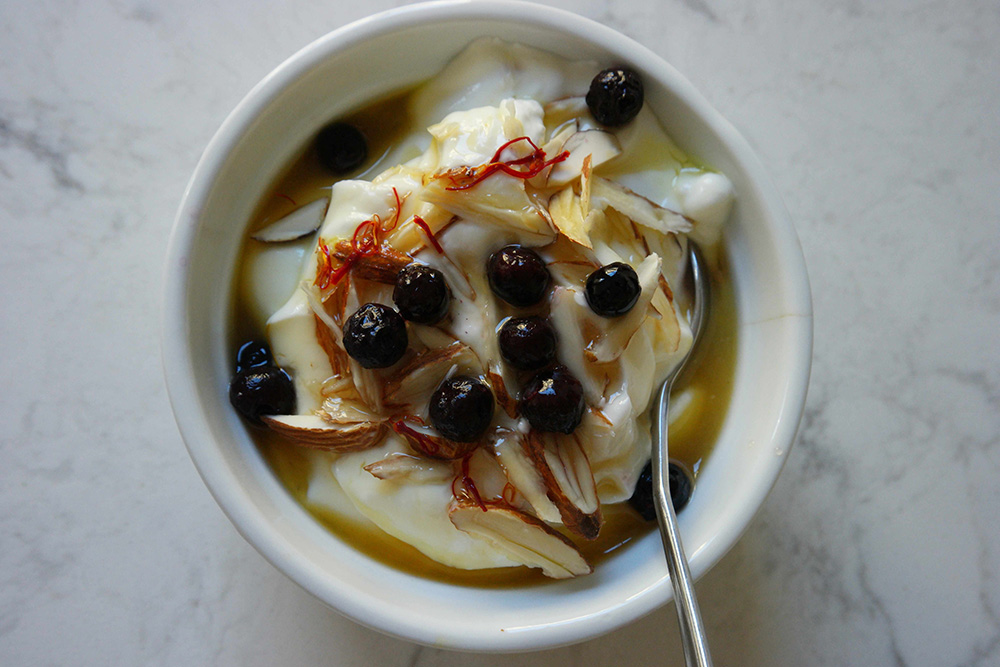
100 Days Eating Vegan
Chef Palak Patel trained for the Boston Marathon on a vegan diet.
Here are my experiences and answers to the most common questions about trying a plant-based lifestyle.
A week before Christmas, I got a call from my friend Will Yandell asking if I was interested in running the Boston Marathon with Clif Bar. My response was laughter. Who was he kidding? I’m a chef who hasn’t run a marathon in more than five years. I travel almost nonstop for work, and I was about to turn 40, which meant I was pretty set in my ways.
But the new year set in, my milestone birthday was coming up, and I couldn’t shake the feeling that maybe it was time to start this new decade with a bang. I finally got past the mental obstacles and decided to dive into the challenge with an added twist of being a vegan. I realized that if I wanted to push my body to achieve a drastic goal, I needed to make a drastic change. To be clear, I’m a chef who is not a vegan, so this was going to be a new journey for me. On Jan. 5, in the dead of winter and with less than three and a half months to race day, I began to train while eating a plant-based diet. I knew if Olympic gold medalists can be plant-based, it was possible for me. I adopted this challenge with the same enthusiasm and planning as the run, which is a huge part of the process. My schedule is demanding, and I travel all over the world where working with all types of food isn’t exactly a recipe for health.
I was interested in learning just how powerful the right nutrition can be when combined with rigorous exercise. This process also wasn’t easy because I had to unlearn a lot of myths about protein and nutrition. Making a change to how you eat is huge and overwhelming. I started by making sure I had a positive mindset about the shift in my lifestyle. It’s easy to get discouraged and focus on all the things you can’t eat. Rather than focusing on that, I made a conscious choice to focus on the many things I could experiment with and cook. I worked with a list of ingredients that are easily available and created recipe ideas for those ingredients. I began with a few simple meal ideas for when my schedule got busy.
I started replacing my main sources of dairy and eggs with vegan options like chia seeds or flaxseed and diving into research about nutrition-packed leafy greens, grains, beans, legumes and nuts. To keep cravings at bay, I used spices and herbs to boost flavor. I learned how to keep up my protein intake with animal alternatives like peanuts, broccoli, quinoa, chickpeas and lentils. Cooking at home allowed me to experiment with various spices and cuisines, which was the easy part. My biggest advice is to get comfortable buying and taste testing different vegetables, fruits and colorful legumes. That’s the best way to learn!

Eating out as a vegan in New York is pretty easy, but traveling is a bit tricky. While I was on the road, I used an app called Happy Cow that has a comprehensive list of vegan and vegetarian restaurants. Going out to eat required a little more planning and calling ahead. I’m fortunate enough that I do not have any food allergies, which enables me to eat at restaurants without much worry and not have to be as diligent about things like cross-contamination.
Rethinking Nutrition and Getting Protein
There is so much misinformation about protein. How will I get protein in my diet if I’m plant-based? How much protein do I need? Don’t I need to increase my protein for rigorous workouts? These were common questions everyone asked me. When it comes to protein, consuming in excess, especially from animal sources, is not healthy or sustainable. A plant-based lifestyle can be packed with protein from a variety of plant foods, especially starches like beans, legumes, lentils and rice, which supplies enough of all essential amino acids when consumed over the course of a day. Ultimately, eat plants like you’re at an all-you-can-eat-buffet, and rest assured that you’re getting more than enough protein if your caloric needs are being met. The truth is, I didn’t need to increase my protein intake because virtually all whole-plant foods contain some protein, so I knew my daily requirement, which was 10% of calories from protein, was easily met. This applies to athletes too, who are often thought to require larger amounts of protein to sustain muscle size and optimize performance. However, athletes have increased overall calorie requirements, so when they boost their intake of whole-plant foods, they automatically meet their greater need for all of the macronutrients, including protein. Over the course of three months, not only did I get enough protein and fiber from a plant-based diet, but my body began to feel stronger, and my mind felt clearer.
Isn’t Being Vegan Expensive?
This is the most common question I got. I’m here to tell you that this isn’t necessarily the case. The most expensive things I used to buy at the grocery store were meat, milk and cheese. I can definitely say that it’s cheaper for me to make the vegetarian version of my favorite dishes — like curries, enchiladas, stews and chili — than the meat versions. The plant-based lifestyle focuses on minimally processed foods. Starting with fruits, vegetables and legumes, all of which can be purchased fresh, frozen, in bulk or canned — just get the low-sodium options where possible. For grains and legumes, I purchased dried in bulk and stored in glass jars for months on end. Buying in bulk is how I saw the most amount of cost savings. I opted to buy my fruits and vegetables from the farmers market at a lower cost than off-season produce at grocery stores. Being Indian, I never have a shortage of spices and herbs, so all of these options helped me transform many of my meals into a variety of exciting and delicious dishes.
What Were the Biggest Changes from Eating Plant-Based?
The first big change I noticed was my sleep: I slept so much better and woke up feeling refreshed. I noticed an increase in my energy level immediately. My morning cup of tea was really all I needed to keep me energized throughout the day. I attribute the increased energy (and lack of afternoon sleepiness) to eating a healthier diet while I was training, especially because going plant-based meant I was avoiding pastries and processed foods since those used to set me on spikes and crashes. My skin improved, and I stopped getting blemishes. The most superficial thing I noticed was my nails and hair getting stronger. My bowel movements became much more, ahem, regular than I had ever experienced, and I was surprised to find that after the first week or so I felt much lighter. Overall, I was more focused throughout the day.

Here are some sample vegan meal ideas from my experience:
- Breakfast: smoothies, overnight coconut milk-soaked oatmeal, tofu scramble, sweet potato hash, fruit salad, vegan pancakes.
- Lunch/Dinner: quinoa burgers, veggie fried rice, burrito bowls, hummus wraps, cauliflower steaks, ramen, roasted or grilled vegetables/stir fry.
- Snacks: chips (potato, sweet potato, carrot), cucumbers with peanut butter, dried fruit, fruits and vegetables, nuts, spiced chickpeas, sunflower seeds.
- Desserts: vegan chocolate mousse, cashew cheesecake, fruit tarts, chocolate granola bars and vegan ice cream.
Pursue a plant-based culinary career with Health-Supportive Culinary Arts training.


Add new comment